How Many Watts is a 24V Lithium Battery
A 24V lithium battery is a powerhouse of clean, portable energy, used in everything from electric bikes and golf carts to solar energy systems and RVs. But how many watts can it actually provide? That’s a question many consumers ask when trying to match power supply with energy demands. Understanding the watt capacity of a 24V lithium battery helps you design better power systems, avoid overloads, and optimize your runtime and performance. In this guide, we’ll take a deep dive into how watt capacity is calculated, what affects it, and what real-world users should expect.
- What Is Watt Capacity in a 24V Lithium Battery?
- Why Understanding 24V Lithium Battery Watt Capacity Matters
- How to Calculate Watt Capacity for Different 24V Lithium Battery Sizes
- 24V Lithium Battery Watt Capacity vs. 12V and 48V Systems
- Types of 24V Lithium Battery Chemistries and Their Watt Capacities
- What Affects the Watt Output of a 24V Lithium Battery?
- Runtime Examples for a 24V Lithium Battery by Appliance
- How to Maximize Watt Capacity from a 24V Lithium Battery
- Choosing the Right 24V Lithium Battery for Your Power Needs
- Understanding the Watt Capacity of a 24V Lithium Battery
What Is Watt Capacity in a 24V Lithium Battery?
When we talk about watt capacity, we're referring to how much power (in watts) a battery can deliver over time. The wattage of a battery is determined using a simple formula:
Watts = Volts × Amps
So, for a 24V lithium battery, if it has a capacity of 100Ah (amp-hours), the theoretical watt capacity is:
24V × 100Ah = 2,400 watt-hours (Wh)
This means the battery can deliver 2,400 watts for one hour, or proportionally less power over a longer time.
Watt vs. Watt-Hour: Know the Difference
Before we go further, it's critical to distinguish between:
Watts (W): A measure of instantaneous power output
Watt-hours (Wh): A measure of total energy capacity
When someone asks "how many watts is a 24V lithium battery?" they often mean watt-hours, not just watts.
Why Understanding 24V Lithium Battery Watt Capacity Matters
Real-World Use Cases
Knowing the watt capacity of your 24V lithium battery is essential in applications like:
Running a solar inverter
Powering electric vehicles or golf carts
Operating tools or appliances off-grid
Sizing batteries for emergency backup systems
Misunderstanding battery wattage can result in:
Undersized systems
Unexpected power loss
Battery damage or shortened lifespan
>>See also What is the Minimum Voltage for a Golf Cart Battery A Comprehensive Guide
How to Calculate Watt Capacity for Different 24V Lithium Battery Sizes
Common 24V Lithium Battery Sizes
|
Capacity (Ah) |
Watt Capacity (Wh) = 24V × Ah |
|
20Ah |
480 Wh |
|
50Ah |
1,200 Wh |
|
100Ah |
2,400 Wh |
|
200Ah |
4,800 Wh |
|
300Ah |
7,200 Wh |
Let’s say you have a 24V 200Ah lithium battery:
24V × 200Ah = 4,800 Wh
That means you can power:
A 100W light for 48 hours
A 1000W appliance for 4.8 hours
24V Lithium Battery Watt Capacity vs. 12V and 48V Systems
Why Choose a 24V System?
Compared to 12V systems, a 24V lithium battery:
Halves the current draw for the same power
Reduces cable size and voltage drop
Improves system efficiency
Compared to 48V systems:
Offers a good balance between cost, safety, and performance
Still compatible with many consumer-grade solar and inverter systems
Efficiency Gains in a 24V Lithium Battery Setup
Power = Voltage × Current. For 1,200W of output:
On 12V: 100 amps
On 24V: 50 amps
On 48V: 25 amps
Lower amps = less heat, smaller cables, and more efficient operation.
Types of 24V Lithium Battery Chemistries and Their Watt Capacities
LiFePO4 (Lithium Iron Phosphate)
Most common type of 24V lithium battery
High cycle life (2,000–5,000 cycles)
Safe and thermally stable
Typical energy density: 90–120 Wh/kg
NMC (Nickel Manganese Cobalt)
Higher energy density (150–200 Wh/kg)
Often used in e-bikes, power tools
Slightly lower lifespan than LiFePO4
More compact but more expensive
|
Chemistry |
Weight (100Ah) |
Watt-hours |
Cycles |
|
LiFePO4 |
~25–30 kg |
2,400 Wh |
3,000+ |
|
NMC |
~18–20 kg |
2,400 Wh |
1,500–2,000 |
What Affects the Watt Output of a 24V Lithium Battery?
1. Discharge Rate (C-rate)
A battery rated at 1C can deliver its full capacity in 1 hour. Discharging faster (like 2C) increases internal resistance and heat.
2. Temperature
Cold temperatures reduce chemical activity:
At 0°C (32°F), usable watt capacity can drop by 20–30%
Below –10°C, some lithium batteries shut down or self-limit
3. State of Charge (SoC) and Depth of Discharge (DoD)
LiFePO4 batteries allow deep discharges (up to 90–100% DoD) without damage. Higher DoD = more usable watt-hours per cycle.
4. Battery Management System (BMS)
Controls charge/discharge rate
Prevents over-voltage, under-voltage, and overheating
Can limit power output for safety
Runtime Examples for a 24V Lithium Battery by Appliance
Here are practical runtime estimates for a 24V 100Ah battery (2,400 Wh):
|
Appliance |
Power (W) |
Runtime (Hours) |
|
LED light string |
50W |
48 hours |
|
Mini fridge |
80W |
30 hours |
|
Laptop |
60W |
40 hours |
|
Microwave oven |
1,000W |
2.4 hours |
|
Electric drill |
900W |
2.6 hours |
>>See also Can I Use 8 Volt Batteries in a 6 Volt Golf Cart
How to Maximize Watt Capacity from a 24V Lithium Battery
Charge at Correct Voltage and Current
Use chargers designed for lithium batteries and adhere to manufacturer-recommended settings. Overcharging or undercharging reduces usable watt capacity.
Avoid Deep Cold or Extreme Heat
Keep your battery between 0°C and 40°C for best performance. In freezing temperatures, consider a battery heater or enclosure.
Use a Quality Inverter
Cheap inverters may waste power or introduce harmonics that reduce efficiency. Look for pure sine wave models with high conversion efficiency.
Monitor Usage with a Battery Monitor
Install a monitor like the Victron BMV-712 to track voltage, amps, and consumed watt-hours in real time. This helps prevent over-discharge and unexpected shutdowns.
Choosing the Right 24V Lithium Battery for Your Power Needs
Assess Your Daily Load
If your daily energy use is 2,400Wh, a 24V 100Ah battery can meet your needs with little margin. For off-grid systems or longer runtimes, consider 200Ah or 300Ah options.
Build for Redundancy
For critical systems, using two 24V lithium batteries in parallel gives redundancy and additional watt capacity.
Match Battery Output with Inverter Input
Ensure your inverter can accept 24V and handle the wattage your battery delivers. Overload will trip protections or damage equipment.
Understanding the Watt Capacity of a 24V Lithium Battery
Mastering the concept of watt capacity gives you full control over your energy system. Whether you're powering a cabin, a solar setup, or a mobile workstation, knowing how many watts your 24V lithium battery can deliver and for how long is key to a successful and reliable power strategy. With watt capacities ranging from 480Wh to over 7,000Wh depending on amp-hour rating, the 24V lithium battery offers flexibility, efficiency, and high performance across a wide range of use cases.
Understanding the watt capacity of a 24V lithium battery is not just about numbers—it's about confidence, safety, and energy freedom. Make informed choices, optimize your system, and let the 24V lithium battery power your next adventure with certainty.

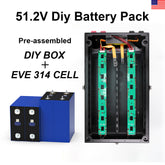

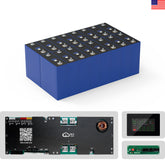

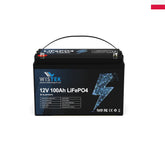
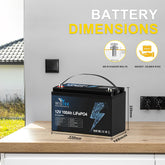

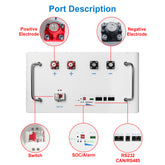
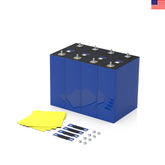
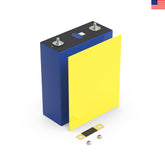
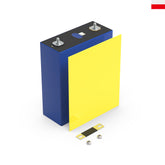

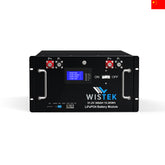
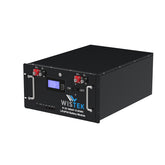
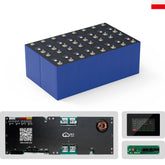








Leave a comment
All blog comments are checked prior to publishing